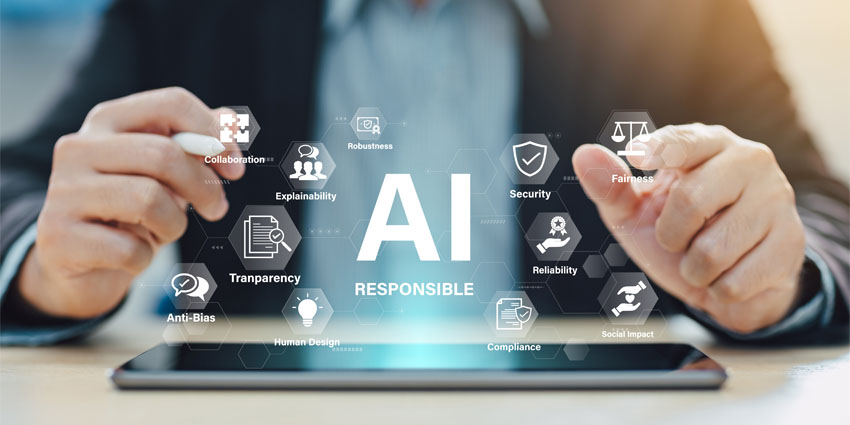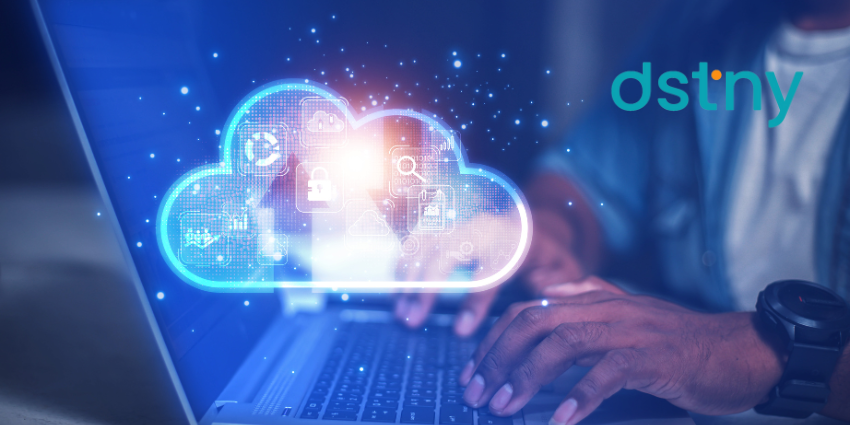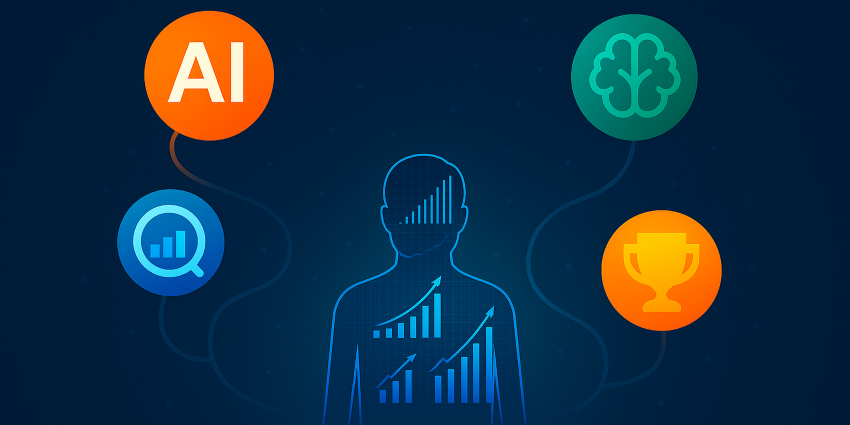AI isn’t a future promise anymore; it’s sitting in on the meeting. It’s typing notes while you talk, stitching together chat threads, translating voices on the fly, and quietly reminding everyone what they agreed to do next. Over the past few years, it has evolved from a curiosity to a standard kit. Nearly every organization now utilizes it in some form, pursuing sharper efficiency and the kind of resilience that only automation at scale can provide.
But there’s a catch. Governance hasn’t caught up. The World Economic Forum states that less than one percent of companies have actually operationalized Responsible AI, meaning most are still flying without real guardrails. It’s no wonder businesses investing in today’s AI-first collaboration tools are starting to ask new questions about bias, data privacy, and explainability.
Business leaders aren’t just focusing on ethics here. They know responsible AI principles have an impact on risk, reputation, and ROI. Using responsible AI in collaboration is the difference between trusted productivity and unmanageable exposure.
We’re now past the hype cycle and deep into accountability mode.
The question isn’t whether to use AI, it’s how to use it responsibly in collaboration platforms, where every conversation is a crucial data point.
What Responsible AI Principles Mean in Unified Communications
Every vendor talks about “Responsible AI” these days. Few can explain what it actually looks like when someone hits “Join Meeting.” In unified communications, responsible AI is shaped by the set of invisible design choices that decide how your team’s words, images, and ideas are captured, processed, and reused.
It’s about making sure your collaboration platforms are transparent, fair, secure, auditable, and human-controlled. Leaders need to know what’s happening behind the scenes. Who trained the model? On what data? How long does that data stick around? Can you trace a decision if something goes wrong?
Different tech giants are approaching this in their own ways. Microsoft’s Responsible AI principles of Fairness, Reliability & Safety, Privacy & Security, Transparency, Accountability, and Inclusiveness have become something of a north star for the industry. AWS adds Governance and Controllability, while ISO/IEC 42001 now provides a formal framework for managing AI responsibly, one that AWS has already certified against.
In unified communications, this comes to life through design features:
- Transparency through model or service cards that document how outputs are generated.
- Bias mitigation by training on diverse voices and accents, improving transcription and translation quality.
- Data minimization through default-off data sharing and configurable retention controls.
- Auditability via independent assessments like the Theta Lake AI Transparency Certification.
Every AI-focused collaboration platform vendor may walk a different lane, but they’re all recognizing how important AI governance and responsibility are becoming.
Why Responsible AI Principles Matter in UC
A year ago, the race was to adopt AI. Now, it’s to govern it.
Across the business world, hundreds of companies have made public commitments to Responsible AI, but only a fraction have figured out what that means in practice. The rush to automate meetings, emails, and workflows has collided with a new wave of regulation. Meanwhile, there is a growing realization that collaboration platforms often handle some of the most sensitive data in the business.
The EU AI Act is just the beginning of an ongoing regulatory process. Similar frameworks are emerging in the US, UK, and APAC, forcing CIOs to prove not just what their AI does, but how it does it. Compliance teams are already mapping requirements, such as explainability and model risk, to communications data.
The human side is more challenging to address. Many employees still hesitate to trust workplace AI, unsure how their words and data are being handled, despite 94 percent of executives continuing to expand AI budgets. That uncertainty has become one of the biggest roadblocks to real adoption.
Companies that prioritize responsible AI principles, however, are starting to see results. Gainsight, for example, chose Zoom because of its clear stance: “We appreciate that Zoom listened and chose not to use customer data to train AI.” Transparency turned skepticism into adoption. Convera, a global fintech firm, implemented Customer Managed Keys (CMK) within Zoom’s ecosystem, doubling employee engagement and satisfying regulatory auditors in one move.
Governance is becoming an enabler, not an obstacle.
When collaboration tools handle voice, video, chat, and sentiment data, Responsible AI principles become the difference between progress and PR disaster. Without them, “shadow AI” creeps in, unsanctioned bots and extensions that quietly process corporate data outside IT’s visibility. With them, organizations can innovate confidently, knowing their AI works for them, not around them.
Buyer’s Framework: Six Questions Your Vendor Must Answer
When it comes to Responsible AI principles in collaboration, the smartest buyers don’t just ask what a tool can do; they ask how it does it. These six questions distinguish between glossy marketing slides and genuine governance.
How is your AI trained, and on whose data?
This is where every conversation about Responsible AI principles should start. If a vendor can’t answer it clearly, stop there. Ask directly: “Do you train your foundation or product models on customer data?”
The best answer: “No, and we can prove it.” Zoom earned buyer trust when it made that exact commitment. Countless other companies, from Microsoft to Cisco, have taken the same approach.
Can you explain how your AI reaches its outputs?
The heart of Responsible AI is explainability. Buyers should expect model or service “cards” that document what an AI feature was designed to do, how it was tested, and how often it’s reviewed.
AWS publicly shares its AI Service Cards, detailing limitations, metrics, and intended use cases. Microsoft achieves the same through its internal Responsible AI Standard, which embeds documentation in every Copilot release.
How do you mitigate bias and ensure inclusivity?
Bias is a business risk. Speech-to-text errors, accent bias, or exclusionary design can quickly erode user confidence.
Delivering Responsible AI in collaboration means training on diverse voices, accents, and experiences so every user is heard equally. Platforms such as Webex and Microsoft Teams now test their models across regions, genders, and languages to reduce bias and ensure fairness.
When vendors claim their systems are “inclusive,” ask for proof: test results, metrics, or audits. If they can’t show them, they probably haven’t done the work.
What are your data retention and minimization policies?
AI tools shouldn’t hoard your information forever. Ask: “Can we configure how long data is stored and where it resides?”
The best platforms let you decide. You might use Customer Managed Keys (CMK) for encryption within Zoom, ensuring data never leaves company control, for instance.
Responsible vendors pair this with data minimization, processing only what’s essential. It’s what differentiates sustainable AI from risky AI.
Can we audit your AI?
If the answer isn’t an immediate “yes,” it’s time to walk away.
Never settle for vague assurances; ask for proof. Serious vendors can demonstrate it: ISO/IEC 42001 to confirm how they manage AI, SOC 2 reports for data safeguards, or independent audits that outline accountability. AWS already carries the ISO/IEC 42001 badge.
Microsoft thoroughly reviews every new Copilot feature internally. Plus, Theta Lake’s transparency certification is now setting a bar others are racing to meet.
How do you ensure humans stay in the loop?
AI was never designed to take people out of the equation; it’s meant to amplify what they do best. Genuine Responsible AI principles keep humans in charge of every outcome an algorithm touches. The real test is simple: can users review, adjust, or overturn what the AI produces before it’s shared? If not, it’s not truly responsible.
Webex allows edits to summaries and transcripts, while Slack requires explicit admin approval for AI workflows. Microsoft Copilot, on the other hand, always presents suggestions for human confirmation.
The ROI of Responsible AI Principles in Collaboration
Making responsible AI a priority sounds like just another hurdle for companies embracing intelligent collaboration tools. It isn’t. Across major platforms, governance-first design is producing not just safer AI, but smarter, faster teams.
Cisco’s Responsible AI Tools
Cisco took a “trust-first” approach when building its Webex AI Assistant, grounding every feature in clear Responsible AI principles: transparency, data privacy, and auditability. The payoff?
73 percent of IT admins say it saves them between two and eight hours a week, with 75 percent reporting faster workflows thanks to AI-driven summaries and transcripts. Those companies aren’t worrying about ethical risks either.
Slack’s Human-First Approach
Slack’s AI design mirrors its human-centered culture, striking a balance between automation and overreach. None of its AI models are trained on customer data. Permissions and privacy follow every message thread, ensuring full alignment with Responsible AI principles around minimization and explainability.
The results speak for themselves: Vercel saved over 70,000 hours annually through trusted AI workflows. Slalom saved $500,000 per year by automating governed workflows through Workflow Builder. Again, just results, without the risks.
Microsoft Copilot: Governance built in
Microsoft is turning Responsible AI from a framework into an operational discipline. Every Copilot release undergoes internal Responsible AI impact assessments, red-teaming, and documentation before launch, a model now echoed by others.
Case studies show why it matters. Danone rolled out Copilot to 50,000 employees, using AI agents in HR and order-to-cash workflows to reduce disputes and speed cycle times. KPMG armed 280,000 professionals with Copilot, cutting compliance reporting by 18 months through governed automation.
Microsoft’s discipline shows that Responsible AI in collaboration can deliver ROI without risking compliance, and that governance is an accelerator, not a brake.
Responsible AI Principles and the Future of Collaboration
AI’s impact on collaboration needs to go beyond faster meetings or smarter summaries today. It has to build and maintain trust. The most advanced platforms are demonstrating that responsible AI principles, when applied in collaboration, drive real results.
When AI is built into collaboration responsibly, it becomes a multiplier, amplifying productivity, governance, and confidence in equal measure. That’s what companies need as they step into the new age of collaboration, more than anything else.
Make Responsible AI part of your collaboration strategy today. Start with six questions, and partner with vendors who can answer them clearly; that’s all it takes.







